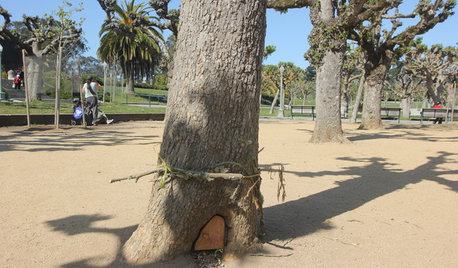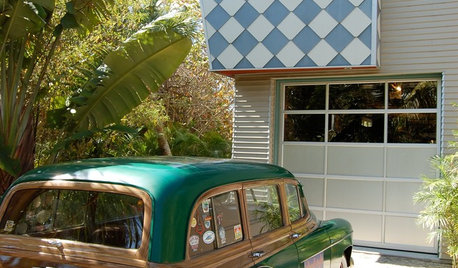did I make a big mistake
akewa
16 years ago
Related Stories

MOST POPULARSo You Say: 30 Design Mistakes You Should Never Make
Drop the paint can, step away from the brick and read this remodeling advice from people who’ve been there
Full Story
FUN HOUZZDid Elves Make a Home in a San Francisco Park?
Speculation has swirled around a Lilliputian doorway in Golden Gate Park. We give you the true story — and a design dilemma
Full Story
DECORATING GUIDESFix Those 'Whoopsies': 9 Fast Solutions for Decorating Mistakes
Don't suffer in silence over a paint, furniture or rug snafu — these affordable workarounds can help
Full Story
BATHROOM DESIGN5 Common Bathroom Design Mistakes to Avoid
Get your bath right for the long haul by dodging these blunders in toilet placement, shower type and more
Full Story
DECORATING GUIDESFrom Queasy Colors to Killer Tables: Your Worst Decorating Mistakes
Houzzers spill the beans about buying blunders, painting problems and DIY disasters
Full Story
REMODELING GUIDESGet the Lighting Right: 8 Mistakes to Avoid
See How These Great Interiors Found the Right Lighting Solutions
Full Story
MOST POPULAR8 Little Remodeling Touches That Make a Big Difference
Make your life easier while making your home nicer, with these design details you'll really appreciate
Full Story
MOVINGRelocating? Here’s How to Make the Big Move Better
Moving guide, Part 1: How to organize your stuff and your life for an easier household move
Full Story
BUDGETING YOUR PROJECTHouzz Call: What Did Your Kitchen Renovation Teach You About Budgeting?
Cost is often the biggest shocker in a home renovation project. Share your wisdom to help your fellow Houzzers
Full Story
Let's Dish! Did You Watch the Flipping Out Premiere?
Contemporary Remodel Kicks off Design Show's New Season. What Did You Think?
Full Story





Amazindirt (7a TN)
anntn6b
Related Professionals
Simpsonville Landscape Architects & Landscape Designers · Birmingham Landscape Architects & Landscape Designers · Oconomowoc Landscape Architects & Landscape Designers · Newcastle Landscape Architects & Landscape Designers · Jackson Landscape Contractors · Waterbury Landscape Contractors · Dedham Landscape Contractors · Fort Atkinson Landscape Contractors · Hicksville Landscape Contractors · Louisville Landscape Contractors · Cerritos Solar Energy Systems · Bronx Roofing & Gutters · Grand Rapids Roofing & Gutters · Miami Beach Roofing & Gutters · Colonia Roofing & GuttersakewaOriginal Author
brandon7 TN_zone7
brandon7 TN_zone7
akewaOriginal Author
Amazindirt (7a TN)
brandon7 TN_zone7
akewaOriginal Author
Amazindirt (7a TN)
brandon7 TN_zone7
Amazindirt (7a TN)
anntn6b
brandon7 TN_zone7
madmouser
myrtleoak
brandon7 TN_zone7
myrtleoak
akewaOriginal Author
myrtleoak
Martha12
brandon7 TN_zone7
rebeccah_2009
brandon7 TN_zone7